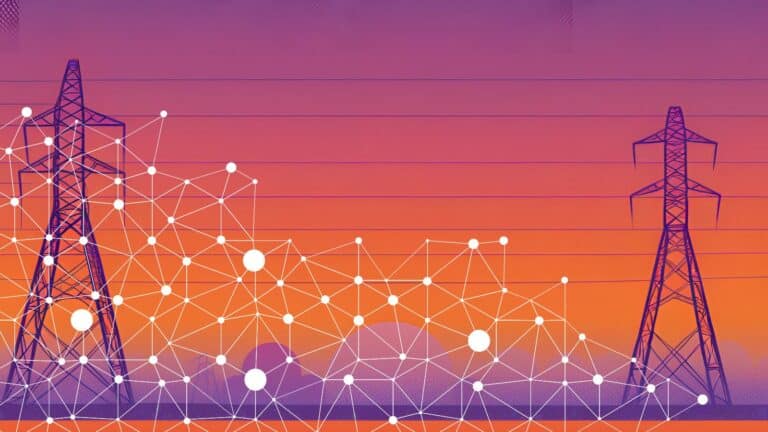EU on track to phase out Russian gas by 2028 but supply challenges remain
- Careful coordination, infrastructure development, and diversified supplies crucial to ensure smooth EU transition - Anadolu Agency
Current Access Level “I” – ID Only: CUID holders, alumni, and approved guests only
Testimonies & Speeches by Abraham Silverman • March 11, 2024
Good morning Chairman Smith, Chairman DeAngelo, members of the Committees.
My name is Abraham Silverman, and I lead the Non-Technical Barriers to the Clean Energy Transition initiative at Columbia University’s Center on Global Energy Policy. I want to thank you for your invitation to testify here today. Previously, I had the honor of serving as the General Counsel and Executive Policy Counsel with the excellent team at the New Jersey Board of Public Utilities. However, my comments today represent my own views.
I’d like to commend the Committees for putting these two bills up for discussion today, because a successful decarbonization strategy requires both an affordable supply of carbon-free electricity and a strong, resilient, distribution grid to carry that clean electricity to our homes and businesses.
My testimony on grid modernization covers three main topics this morning:
I will then close with a few comments on the 100 percent clean energy standard and why transitioning from a Renewable Portfolio Standard to a Clean Energy Standard may be a good choice for New Jersey; how grid reliability is preserved under a 100 percent clean standard; and some of the innovative features of the proposed legislation.
The distribution grid is “the backbone on which all other efforts to transition to a clean energy economy will rely.”[1] Our best estimates are that we will need to approximately double the amount of energy passing through our distribution grid by 2050.[2] Grid modernization generally refers to the process of preparing the distribution system to meet these future needs.
North Carolina State makes the point that grid modernization “lacks a universally accepted definition” but generally refers to “actions making the electricity system more resilient, responsive, and interactive.” [3]
Tackling grid expansion needs up front avoids the problem of having utilities make multiple small upgrades when one larger project would be faster or achieve significant economies of scale. One of the most significant steps that we can take to accelerate benefits of grid modernization is to identify the places where more electricity is likely to be needed and then proactively build the grid out to meet those needs. There is significantly evidence that a proactive buildout of the grid results in significantly lower total costs than the piecemeal approach to grid expansion that we have today.[4]
Not only do we lose an opportunity to reduce costs, but inadequate distribution infrastructure comes at a substantial direct cost to ratepayers and green jobs, as well. For example, there are currently a number of “closed circuits” in the State where installation of new distributed solar facilities is effectively prohibited. Solar developers incorporate the risk of closed circuits into their development costs, meaning that the price of solar renewable energy certificates rises. Green jobs are lost when electricians and homebuilders are told that electric vehicle or heat pump installations are delayed. Economic development efforts are harmed when new loads, such as advanced manufacturing or data centers, are delayed because of inadequate access to distribution capacity.
There are also significant reliability benefits from a stronger distribution grid. Everyone in New Jersey who lived through Super Storm Sandy remembers the cost of an underbuilt distribution grid, and an improved distribution grid can help.
I find it helpful to divide grid modernization efforts into three main topic areas:
While investment across all three of these areas will likely be necessary, the Legislature should take care to ensure that investment in traditional poles & wires solutions does not crowd out investment in technological or market alternatives that may provide better customer outcomes. The fact is that traditional ratemaking rewards utilities for spending more, which can lessen the utility’s interest in exploring lower cost options. This is particularly true when those options include some element of operational or technology risk that could lead to future disallowances.
Mitigating this tendency will require careful oversight of the utility’s grid modernization filings. One potential option is to mandate that utilities compare the cost of traditional poles & wires solutions against a set of possible alternatives in their filings with the Board of Public Utilities. For example, the Board could require utilities to evaluate the cost effectiveness of alternatives including at least the following:
One option that has been gaining traction nationally is to financially reward utilities for adopting advanced technologies on the distribution grid.[7] The Board of Public Utilities could, for example, be provided the discretion to provide a higher return on equity for investments that utilize the advanced technologies.
I will share the concern that the short timeline proposed in the legislation may make such careful evaluation of alternatives difficult and could lead utilities to make proposals that are overly reliant on poles & wire solutions. The short evaluation period could also freeze third parties wishing to propose alternatives to the utility’s proposal out of the process, as the schedule mandated in the legislation likely would make such advocacy difficult. Additional flexibility in compliance timelines may, in this case, lead to better outcomes.
One particularly innovative aspect of this gid modernization legislation is the idea of using general fund dollars to support grid modernization efforts. This portion of the proposal is appealing for two main reasons. First, it potentially unlocks federal matching funds coming out of the Inflation Reduction Act and Infrastructure Investment and Jobs Act.
Second, the proposal to include $300 million in general funds to support this work is particularly important. A significant risk of the clean energy transition is that fundamentally retooling the grid for a 21st Century clean economy may put electricity service further out of the financial reach of low- and moderate-income customers.[8] Supplementing ratepayer investments with tax payer funds is an important tool for keeping the grid affordable for everyone, particularly as we encourage customers of all income levels to move an increasing share of their energy consumption to the electric grid.
I would also like to briefly address the proposal to move New Jersey from a Renewable Portfolio Standard (RPS) to a Clean Energy Standard (CES). Renewable Portfolio Standards or Clean Energy Standards are currently in place in 29 states, plus the District of Columbia. According to the Department of Energy, approximately 30 percent of all renewable energy growth in the United States since 2000 is attributable to state RPS requirements, with much of that growth concentrated in the Northeast and Mid-Atlantic areas.[9]
Let me start by talking about where are today. As of 2024, we currently generate approximately 40 percent of our electricity from in-state nuclear today. In addition, we procure Class I Renewable Energy Credits (RECs) equal to approximately 25 percent of the State’s total energy consumption.
There are two recent trends of note: first, 17 states now have a 100% clean energy or renewable energy requirement. Second, 15 states have moved from an RPS structure to a CES structure between 2017 and 2023. The pending legislation, as well as Governor Murphy’s Executive Order 315, is thus very much within the mainstream of policy options.
I will not talk about how an RPS and a CES work, how they are similar, and how they differ. The most important feature of either a CES or an RPS is how aggressive and soon the target is established. Both programs require load serving entities (including both the utilities and third-party suppliers) to retire “renewable energy certificates” (REC) or “clean energy attribute certificates” (CEAC) in an amount equal to total amount of load they serve. One REC represents the property rights to the environmental non-power attributes of renewable electricity generation.[10] Retirement of a REC or CEAC signifies that the environmental attributes have been claimed and cannot be resold or used by someone else.
Further it’s important to recognize that preserving grid reliability is a collaborative process between utilities, our regional grid operator, known as PJM Interconnection, and state and federal regulators, and is not directly impacted by the Clean Energy Standard legislation. PJM’s market is designed to ensure that reliability is preserved and operates independently of any Clean Energy or Renewable Portfolio Standard.
There primary benefit of a Clean Energy Standard over a comparable RPS structure is the introduction of additional competition to supply our clean energy needs. While an RPS program is open only to renewable resources, the CES allows nuclear, clean hydrogen, and other zero-carbon to compete to supply clean energy. This is particularly attractive to a state like New Jersey that has long relied on nuclear resources.
There are three additional features of the CES program proposed in New Jersey that are worth highlighting. First, the definition of “clean” matters and the carbon content of a generator should reflect the total up-stream and direct carbon emissions. Second, the program adopts a goal of moving past megawatt-hour matching to ensure that the generation resources we rely on to supply our electricity are clean by 2045. This focus on capacity as well as energy is innovative and should be supported. Third, the legislation also proposes to reward generators that provide higher-quality RECs or CEACs by providing them an additional compliance credit. This innovative procedure has the potential to increase the impact of the CES program.
Finally, there has been extensive discussion of the role of in-state generation in meeting our clean energy needs. One of the important features of the CES is that the State’s preferred in-state generation resources – including offshore wind, in-state solar, and nuclear, among others – are given a strong preference in the CES. Out-of-state resources only compete to fill in the demand for clean energy that is not specifically delegated by the Legislature, ensuring that in-state resources continue to supply the majority of the State’s clean energy needs. If there is a shortage, the proposed legislation allows the Board of Public Utilities to procure additional resources, including in-state resources.
[1] New Jersey’s 2019 Energy Master Plan.
[2] See 2019 Energy Master Plan.
[3] See North Carolina State University’s Clean Energy Technology Center https://nccleantech.ncsu.edu/2023/04/27/the-50-states-of-grid-modernization-q1-2023-states-address-microgrids-resilience-and-low-income-rate-reforms-during-q1-2023/
[4] See, e.g., Comments of the New Jersey Board of Public Utilities to the Federal Energy Regulatory Commission in Docket No. RM21-17-000 (filed August 17, 2022) (citing examples of cost savings attributable to planned transmission).
[5] See 2019 Energy Master Plan, Goals 5.1.1 and 5.1.2.
[6] See 2019 Energy Master Plan, Goal 5.1.1.
[7] See, e.g., Montana’s first-in-the-nation law encouraging the use of advanced reconductoring and allowing for enhanced utility earnings. https://leg.mt.gov/bills/2023/HB0799/HB0729_2.pdf.
[8] See https://www.energypolicy.columbia.edu/publications/energy-insecurity-in-the-united-states/
[9] https://emp.lbl.gov/publications/us-state-renewables-portfolio-clean
[10] EPA Definition: https://www.epa.gov/green-power-markets/renewable-energy-certificates-recs.

AI’s growing power demand has received enormous attention in recent months. In many places, the lack of power supplies is an important constraint on the growth of data centers to train and run AI models.

Kenya and South Africa have recently started moving toward an open access regime in their electricity sectors, while the US and India have been on this path for over two decades.

Full report
Testimonies & Speeches by Abraham Silverman • March 11, 2024